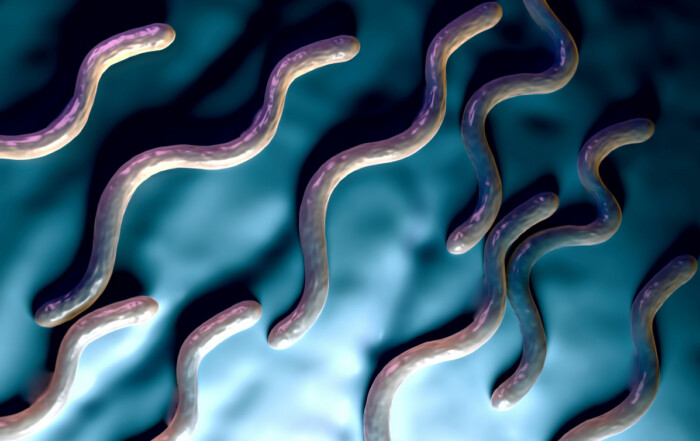Do you suffer from Neurological Lyme Disease? We can help!
Neuroborreliosis, MS, ALS, Parkinson’s, and more!
Most doctors will tell you that the exact cause of your diagnosis is unknown before they admit that your symptoms may be attributed to Lyme disease. But even though mainstream research has yet to correlate Lyme disease and severe neurological disorders such as MS and ALS, there is an increasing number of clinical reports showing improvements in those suffering from neurological illnesses following effective treatment of Lyme microbes and the damage that they cause.
This article is for people with confirmed or suspected cases of neurological Lyme disease that may or may not present as symptoms of other illnesses. Keep reading to discover the causes and new treatment options for people with Borrelia and co-infection induced neurological problems.
Common Symptoms of Neurological Lyme
Known as the Great Imitator, Lyme disease can present itself in the following ways:
- Lyme rage
- Irritability
- Personality changes
- Emotional instability
- Seizures
- Tremors
- Hypothermia
- Migraines
- Headaches
- POTS
- Vertigo
- Dizziness
- Neurocardial symptoms
- Brain fog
- Brain fatigue
- Memory loss
- Dyslexia
- Systemic dystonia
- Paralysis
- Attention deficits
- So much more
You’ll notice that some of these symptoms are also common to Multiple Sclerosis, ALS, muscular dystrophies, Alzheimer’s, and other neurological disorders, very often because tick-borne microbial infections are found in the brain of each of these illnesses.
Borrelia: Shape-Shifters
The multiple strains of Borrelia spirochetes (spiral-shaped bacteria) most associated with Lyme disease are closely related to the spirochete of Syphilis, another malady known in the medical community to cause predictable neurological symptoms. One might say that the Lyme spirochetes are the genetically-enhanced cousin of syphilis, seeing as both are able to shape-shift in order to escape antibiotic treatment efforts.
Research shows that within 20 minutes of infection from the bite of an infected insect, Lyme spirochetes can reach the brain. It is when this happens that predictable problems begin to occur.
Ammonia Toxicity in the Brain
The spirochetes of both syphilis and Lyme disease are known to produce urease enzymes which cause localized ammonia to accumulate in the brain (hyperammonemia). This Lyme-induced ammonia causes inflammation and swelling of the astrocytes (brain cells) which leads to numerous subsequent neurological symptoms.
Leaks in the Blood-Brain Barrier
The presence of spirochetes and ammonia in the brain also cause the blood-brain barrier to leak, allowing larger molecules to enter the protected inner sanctum of the brain. When the brain registers these substances, increased swelling of brain cells, and the excessive alkalinity of the ammonia, it presents as having undergone brain trauma. In fact, those with longstanding Lyme encephalopathy show similarities to those who have experienced a classic traumatic brain injury—like that from a car accident or other physical injury to the brain.
The prefrontal cortex, frontal, and temporal lobes—which are largely responsible for working memory and executive functions—are most susceptible to alterations in brain wave patterns caused by these bacteria-induced insults. Random, often unexplainable neurological symptoms are the unfortunate result.
Lyme Disease: The Perfect Storm
Challenges to the body such as how much protein a person has eaten, shifts in barometric pressure as weather fronts change, excessive salt intake causing an increase in fluid retention and resulting in increased brain edema in localized areas of the brain, poor dietary choices, hormonal shifts, emotional upsets, mental strain, physical strain, and of course the harmful effects of pharmaceutical or natural treatments that work against the synergy of the body can aggravate the already hypersensitive and irritated brain tissues.
Treatment challenges are just as diverse. Antibiotics only allow for a lessening of the bacterial population, due to the known fact that all bacteria mutate to avoid these drug treatments. Though these bacteria may never cause disease again, they may also remain silent for months or years, only causing symptoms again when the body has become weakened due to life’s stressors. Unfortunately, patients are often led to believe that their infection is gone, due to an absence of positive lab antibodies or PCR test. However, these tests are widely known to be inaccurate, creating false-negative results even in the worst stages of infection.
Lyme Microbes: Like Termites In Your House
It’s important to keep in mind that internal damage caused by human infections is not unlike internal damage caused by termites in a home’s wooden structures. Just as killing the termites does not repair the damage that the termites caused to your home, killing the microbes does not repair the damage they have already caused to your body, especially if your infection has been present for many years. Following Induced Native Phage Therapy, supportive treatments will often be needed to truly restore your quality of life, which is why we require all INPT patients to visit our center for a minimum of two weeks time.
Our Treatment Plan
- The source of the ammonia, the bacteria need to be brought under the control of the body. This is much easier now that we are incorporating INPT.
- The urease enzymes that are causing excessive ammonia to be produced need to be blocked.
- The ammonia itself needs to be neutralized, so that it cannot continue to irritate the brain and cause swelling, and draining the brain’s energy production.
- The blood-brain-barrier must be repaired so that it no longer allows particles to reach the brain that were never supposed to do so.
- The harmful toxins from the environment and from various causes must be detoxified and source-eliminated to remove accessory irritants.
- The brain tissues must be nutritionally supported and the brain’s mitochondrial energy production restored.
- The structural issues that are now there from illness must be addressed.
- Address all of the Lyme-induced epigenetic miasms and the Lyme-activated SNP mutation issues.
Finally, the brain waves themselves which have been stuck in various ways need to be assessed and relaxed, so that normal regulation of the mind and body can be restored.







